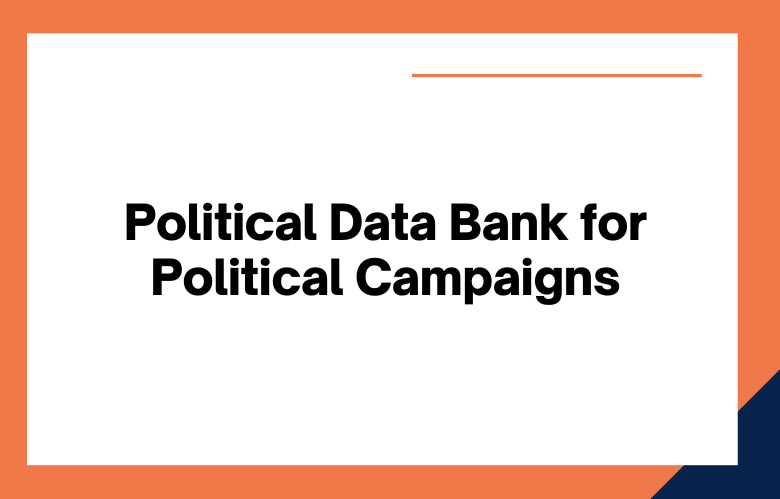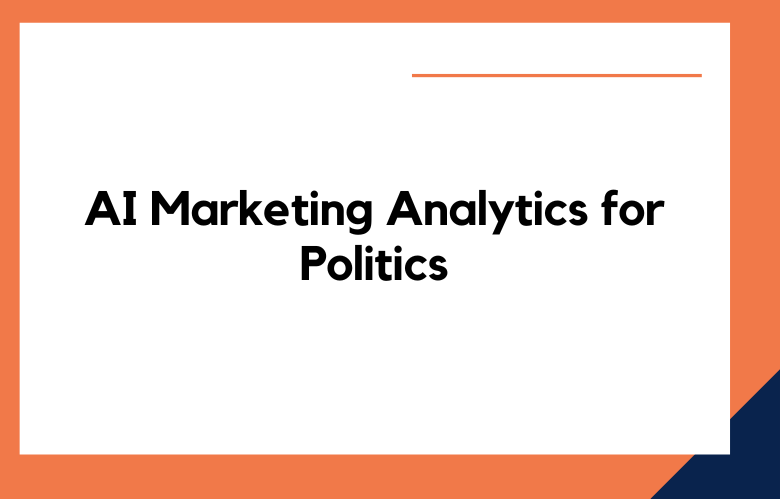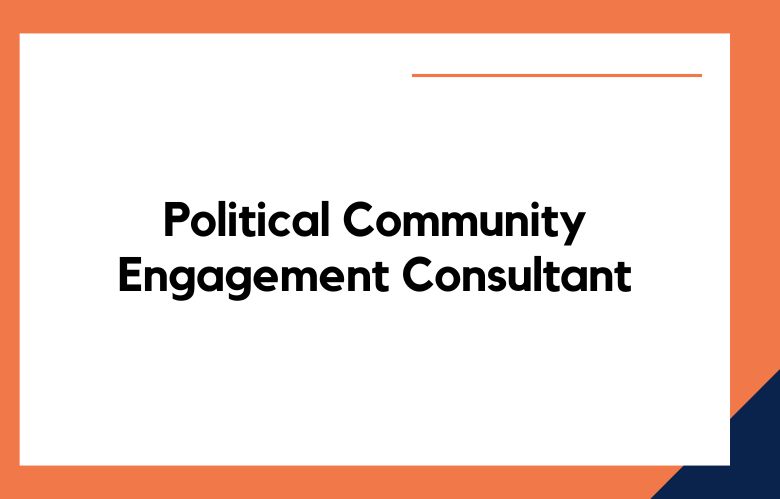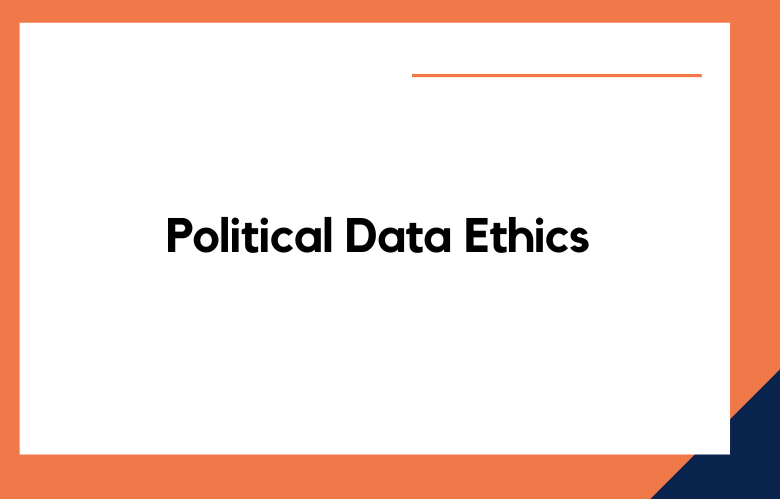Political campaigns are more than just about the candidates – they are complex operations that require data-driven insights to understand what is working and what needs to be improved.
Utilizing a political data bank can be an invaluable tool for any campaign, as it can provide valuable information about the current state of politics, voter preferences, and local trends.
Let’s look at how political data banks can be used to inform campaigns.
What is a Political Data Bank?
A political data bank is an online resource that provides up-to-date information on voting patterns, demographics, issues of importance to voters, and other essential information related to politics and elections.
These databases can include anything from election results, polling numbers, candidate bios, voting histories, and more.
By leveraging this data in an organized way, campaigns can gain powerful insight into their target audience’s interests and opinions to make better strategic decisions.
Why do Politicians need a Political Data Bank?
In the age of digital marketing, data-driven decisions will vary between winning and losing an election. Politicians need access to reliable data to make informed decisions that will move their campaigns forward.
Having a Political Data Bank is essential for any political campaign. Let’s look at what this data bank can do and how it can help you win your next election.
How Data Banks Help Political Campaigns Get Ahead.
Political campaigns rely on data banks to make informed decisions and achieve success.
Data banks collect, store, and analyze a large amount of information from various sources to help campaigns better understand the electorate and the issues that matter most.
They provide invaluable insights into what voters want, how they think, and what strategies will most effectively reach them. Let’s examine how data banks help political campaigns get ahead.
Unlocking the Power of Political Data Banks for Campaigns
Political campaigns require a lot of data to be successful. They need data about their potential voters, their opponents’ campaign strategies, and current events that could impact their election.
This is where political data banks come in. A political data bank is a centralized repository of information that can help campaigns make better decisions and plan more effective strategies.
Discuss how campaigns can use political data banks to gain a competitive edge in their elections.
Using a Political Data Bank effectively
The key to effectively using a political data bank is understanding what data you need to make sound strategic decisions.
Determining which questions to answer before diving into the research process is essential.
Do you want to understand who your target demographic is? Are you seeking specific polling numbers or voter sentiment on particular topics or issues?
Once you have identified the information you need from the database, you can craft your research strategy accordingly.
The Benefits of Leveraging Political Data Banks
The primary benefit of a political data bank is that it provides an organized way for campaigns to access the necessary information quickly and accurately.
By having access to this kind of detailed analysis early on in the campaign cycle, teams have time to strategize ahead of time and develop plans tailored specifically for their target audience.
This type of data can help teams identify potential areas where they need more resources or improvement—allowing them to focus their efforts where they will have the most impact on their overall goals.
Data Collection & Analysis
Data banks collect vast amounts of data from public records, surveys, polling results, social media posts, digital advertisements, and other sources.
This data is then analyzed to gain detailed insights into the preferences and behaviors of the electorate.
This in-depth analysis helps political campaigns make more informed decisions about their strategy and messaging.
For example, if a campaign discovers that a particular issue resonates strongly with voters in their district, they can tailor their message or adjust their platform accordingly.
Targeting & Personalization
Data banks also allow political campaigns to target specific demographics or voters in some geographic regions with personalized messages tailored to their needs.
For example, suppose a campaign targets younger voters who are concerned about climate change. In that case, they can use data gathered from surveys or social media posts to craft messages specifically aimed at this demographic group that addresses their concerns directly.
This type of targeted approach helps political campaigns maximize the effectiveness of their outreach efforts by ensuring that their message reaches its intended audience.
Voter Engagement & Mobilization
Data banks can identify potential supporters and those needing additional encouragement or motivation to vote for a particular candidate or party.
By analyzing survey results and demographic information collected from public records, campaigns can create lists of likely supporters and target them with personalized messages encouraging them to vote for a particular candidate or party on election day.
This type of voter engagement and mobilization is essential for any successful political campaign as it helps ensure that potential supporters turn out on election day.
Data Gathering and Analysis
Political data banks contain valuable information that can help inform campaign strategy and decisions. This includes demographic information about potential voters, such as age, gender, race, income, and education levels.
It also includes voting history information so campaigns know which citizens are likely to vote in upcoming elections and which ones may need extra encouragement or persuasion.
Political data banks contain up-to-date news stories from around the country that could impact the outcome of an election;
This helps campaigns stay informed about what’s happening worldwide and adjust their messaging accordingly.
Using Data to Make Decisions
With all this information available in one place, it becomes much easier for campaigns to make intelligent decisions when targeting potential voters and crafting messages that resonate with them.
For example, suppose a campaign knows that specific demographics are likelier to vote for their candidate than others. In that case, it can target those groups specifically with tailored messages designed to increase turnout on Election Day.
Similarly, suppose a campaign knows that specific issues are essential to certain demographics or regions of the country. In that case, it can craft messages around those issues to appeal to those groups or areas.
Campaign Optimization
Political data banks can help campaigns make better decisions, craft better messaging strategies, and optimize their operations.
For example, they can track spending on various activities, such as advertising or voter outreach efforts, to know what works best for them (and what doesn’t).
This allows them to allocate resources more efficiently and focus on the areas where they’re most likely to see results—all while minimizing wasteful spending on ineffective tactics or activities.
How To Utilize a Political Data Bank For Maximum Success in Political Campaigns?
Political data banks have become essential for political campaigns in recent years. Utilizing these data banks effectively can help you gain an edge over your opponents and achieve maximum success in your political campaign. Here are some guidelines on how to make the best use of political data banks:
Identify your target voter group:
The first step in making the most of a political data bank is to identify the group of voters that you want to target.
The data bank allows you to search for voters based on demographics such as age, gender, income, voting history, and political affiliation.
Develop targeted messaging:
Once you have identified your target voter group, you can use the information from the political data bank to develop personalized messaging that resonates with your audience.
You can create messages addressing specific issues and concerns important to your target voters and tailor your communication style to fit their preferences.
Implement effective outreach strategies:
The next step is to implement effective outreach strategies that reach your target voters where they are.
This may include social media ads, email campaigns, voter registration drives, and door-to-door canvassing. Using the political data bank information, you can strategically choose the most effective outreach methods for your target voter group.
Monitor and adjust your strategy:
Finally, it is essential to continually monitor and adjust your political campaign strategy based on the feedback and data you receive.
You can use the political data bank to track voter engagement and measure the effectiveness of your outreach efforts.
This information can help you decide where to allocate your campaign resources and adjust your messaging to better resonate with your target voters.
In conclusion, political data banks are an invaluable resource for political campaigns.
Using the data effectively, you can identify and engage with your target voter group, develop compelling messaging, implement successful outreach strategies, and monitor and adjust your strategy for maximum success.
Unlock the Hidden Power of Political Data Banks for Your Campaigns?
Political data banks have become an integral aspect of modern-day political campaigns. They contain vast amounts of data about voters, including their details, voting history, and political preferences.
Accessing and properly analyzing this data can be a significant advantage for campaigns looking to engage voters and win elections.
One of the hidden powers of political data banks is their ability to help campaigns target their messages to specific voter groups.
This can be accomplished through microtargeting, which analyzes individual voter data to determine the most effective message for each group.
By tailoring their messaging to different voter groups, campaigns can better connect with them personally, boosting their chances of getting the vote.
The Essential Guide to Running Effective Campaigns with a Political Data Bank?
Running effective political campaigns requires access to comprehensive and accurate data. In today’s digital age, political campaigns increasingly rely on data-driven strategies to reach voters and sway public opinion.
A political data bank, which brings together a wide range of information about voters, can be indispensable in running successful and targeted campaigns.
The Essential Guide to Running Effective Campaigns with a Political Data Bank offers a step-by-step blueprint for maximizing a political data bank’s potential.
The guide takes readers through building and maintaining a data bank, including collecting and integrating data from various sources.
Harnessing Big Data for Your Political Campaign – What You Need to Know About Political Data Banks?
In today’s digital age, advanced technology has made it possible to gather and analyze large amounts of data for effective decision-making.
For political campaigns, this means that harnessing big data can significantly enhance the campaign’s outcome.
Political data banks are essential to harness big data for a political campaign. These data banks collect various information, including voter demographics, past voting records, interests, and opinions.
The data collected by these banks can give a campaign a better understanding of its potential voters, allowing candidates to tailor their messaging and outreach efforts more effectively.
Cracking the Code: How to Leverage a Political Data Bank To Maximize ROI for Your Campaign?
In the era of digital politics, having access to a well-maintained and organized political data bank can be a game-changer for any campaign.
Political data banks house a wealth of information about voters, their attitudes, behaviors, and preferences, as well as about donors, supporters, and volunteers.
By leveraging this treasure trove of data, campaign managers and strategists can make data-driven decisions that can significantly boost their chances of winning elections.
One crucial way political data banks can maximize campaign ROI is by creating customized voter profiles.
By cross-referencing data from multiple sources, such as voting records, social media interactions, and consumer data, campaign operatives can create nuanced profiles of voters beyond demographics such as age, gender, and income.
These profiles can capture intricacies such as political preferences, media consumption habits, and their likelihood to volunteer or donate to a campaign. Such detailed profiles can help movements develop targeted outreach programs that resonate with specific groups of voters, making them more effective and efficient.
Conclusion
Political campaigns require careful planning and management to ensure success at the ballot box come Election Day.
Successful campaigning needs teams to gather accurate information about their target audience and use it strategically to create effective strategies that resonate with voters.
Leveraging political data, banks can empower teams with up-to-date insights into various aspects of politics—allowing them to make informed strategies to maximize their chances at success come Election Day.
By utilizing these powerful tools effectively and strategically throughout every phase of the campaign cycle—from pre-campaign planning through post-election analysis—teams will be well-equipped with all the necessary insights needed for success at the polls!
Call: +91 9848321284
Email: [email protected]











